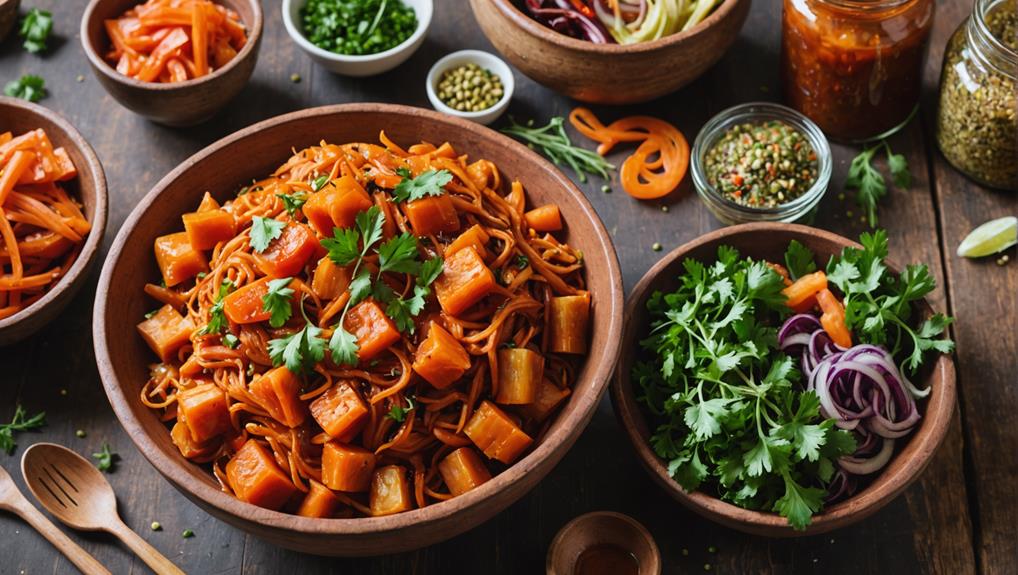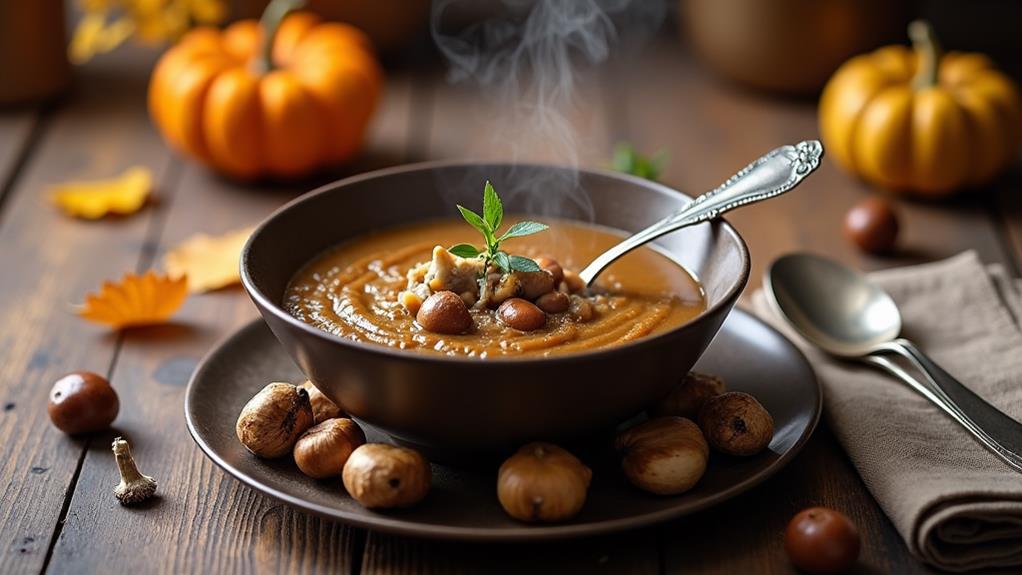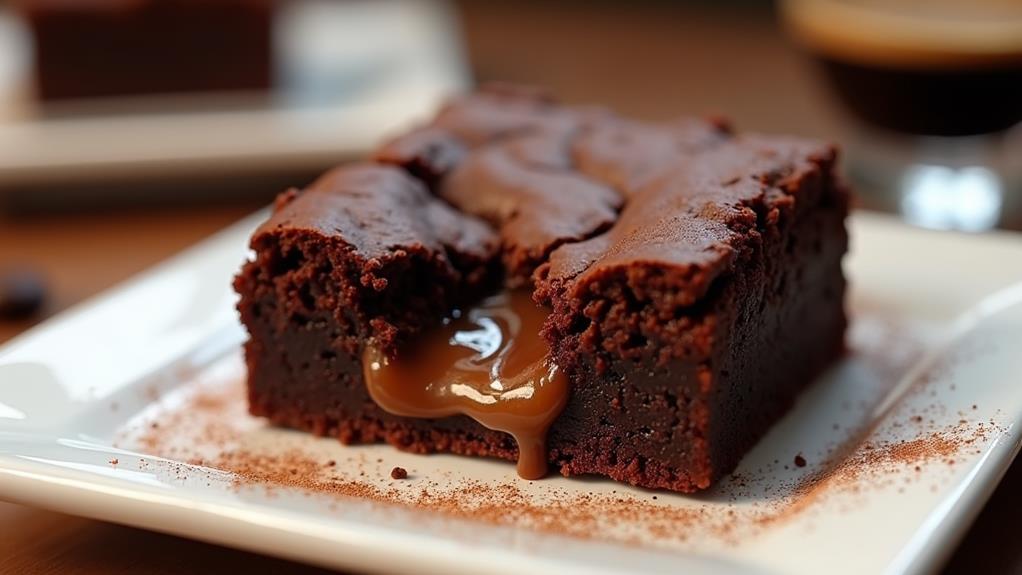To unlock mouthwatering fermented flavors, you'll need to master lacto-fermentation techniques. Start by using fresh produce, sea salt, and non-chlorinated water, adding 2% salt by weight to create the ideal environment for lactic acid bacteria. These bacteria transform ingredients, enhancing flavors and creating probiotic-rich foods. Harness enzymes to break down carbohydrates and proteins, releasing amino acids that contribute to umami taste. Experiment with artisanal cultures to develop complex flavor profiles in dishes like kimchi and sauerkraut. Blend time-honored traditions with modern gastronomy to push the boundaries of fermentation. By understanding these principles, you'll be well on your way to creating culinary masterpieces.
Mastering Lacto-Fermentation Techniques
Lacto-fermentation is a simple yet powerful technique that can transform ordinary ingredients into flavorful, probiotic-rich foods. To master this innovative process, you'll need just a few key elements: fresh produce, sea salt, and non-chlorinated water.
Start by adding 2% salt by weight to your chosen ingredients, creating an environment where lactic acid bacteria (LAB) thrive. These beneficial microbes come in two varieties: homofermentative, which produce only lactic acid, and heterofermentative, which generate multiple compounds for more complex flavors.
As you experiment with fermented foods, you'll discover how LAB convert sugars into tangy lactic acid, enhancing both taste and nutritional value. To ensure success, maintain anaerobic conditions by keeping your ferment submerged and away from direct sunlight.
Use pure salt without additives to avoid interference with the fermentation process. As you perfect your technique, you'll unlock the ability to create iconic fermented foods like pickles, sauerkraut, and yogurt right in your own kitchen.
With practice, you'll harness the power of lacto-fermentation to extend shelf life and elevate everyday ingredients into culinary delights.
Harnessing Enzymes for Flavor Enhancement
The magic of fermentation goes beyond the action of lactic acid bacteria alone. It's the enzymes produced during this process that truly unlock a world of flavor possibilities.
As you delve into fermentation, you'll discover how these powerful catalysts break down complex carbohydrates and proteins, creating a depth of taste that's simply unattainable through other cooking methods.
You'll find that these enzymes are your secret weapons for developing unique flavor profiles. They release amino acids, which contribute to that coveted umami taste, making your fermented creations more savory and satisfying.
As you experiment, you'll notice the formation of aromatic compounds that significantly enhance the sensory experience of your dishes.
To harness this potential, consider manipulating fermentation conditions like temperature and duration. This will allow you to optimize enzyme activity and tailor the flavor enhancement to your specific needs.
Unlocking Umami Through Fermentation
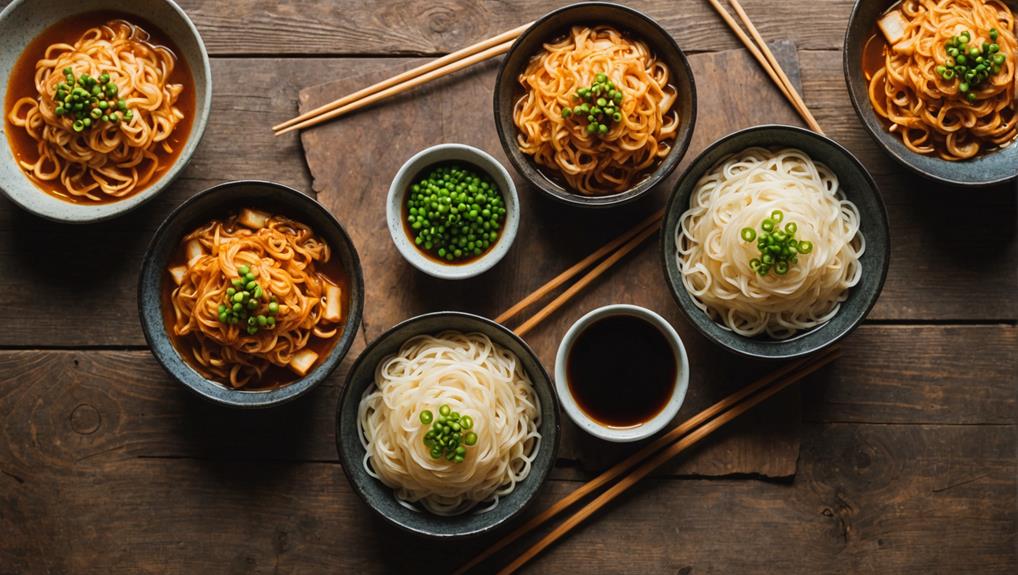
Enzymes aren't the only flavor enhancers in fermentation; they're also key to unlocking the coveted umami taste. When you harness the power of fermentation, you're tapping into a world of savory complexity that can elevate your culinary creations. The process breaks down proteins into amino acids, particularly glutamate, which is responsible for that mouthwatering umami flavor you crave.
In Japanese cuisine, koji plays a crucial role in developing umami. This Aspergillus oryzae mold transforms simple ingredients into flavor powerhouses like sake, soy sauce, and miso.
But don't overlook the impact of lactic acid bacteria (LAB) in fermentation. These microorganisms not only contribute tangy notes but also enhance umami by producing metabolites that add depth to your fermented foods.
You'll find complex umami flavors in dishes like kimchi and sauerkraut, where fermentation breaks down sugars and proteins to create a rich, savory profile.
To intensify these flavors even further, combine fermentation with aging. This technique works wonders in aged cheeses and fermented fish sauces, where continued microbial activity develops an even more complex umami taste over time.
Artisanal Cultures in Culinary Creations
Delving into the world of artisanal cultures, you'll discover a realm of culinary possibilities that can transform your dishes. These cultures, particularly lactic acid bacteria (LAB), are the secret behind creating complex flavors in fermented foods. By incorporating artisanal cultures into your cooking, you're not just preserving ingredients; you're unlocking a treasure trove of tastes that can elevate your meals to new heights.
Take inspiration from renowned restaurants like Noma, where wild fermentation techniques showcase the power of multiple LAB strains working together. You can experiment with:
- Lacto-fermented vegetables for a tangy kick
- Cultured butter to add depth to sauces and spreads
- Wild fermented fruits for unique sweet-tart combinations
Artisanal cultures allow you to explore a wide spectrum of flavors, from sweet and sour to umami. By embracing these innovative techniques, you'll be able to create pickled vegetables that burst with flavor and develop innovative recipes that push culinary boundaries.
The key is to understand how different cultures interact and contribute to the overall taste profile of your dishes. With practice, you'll master the art of using artisanal cultures to craft mouthwatering, complex flavors that will impress even the most discerning palates.
Time-Honored Traditions Meet Modern Gastronomy
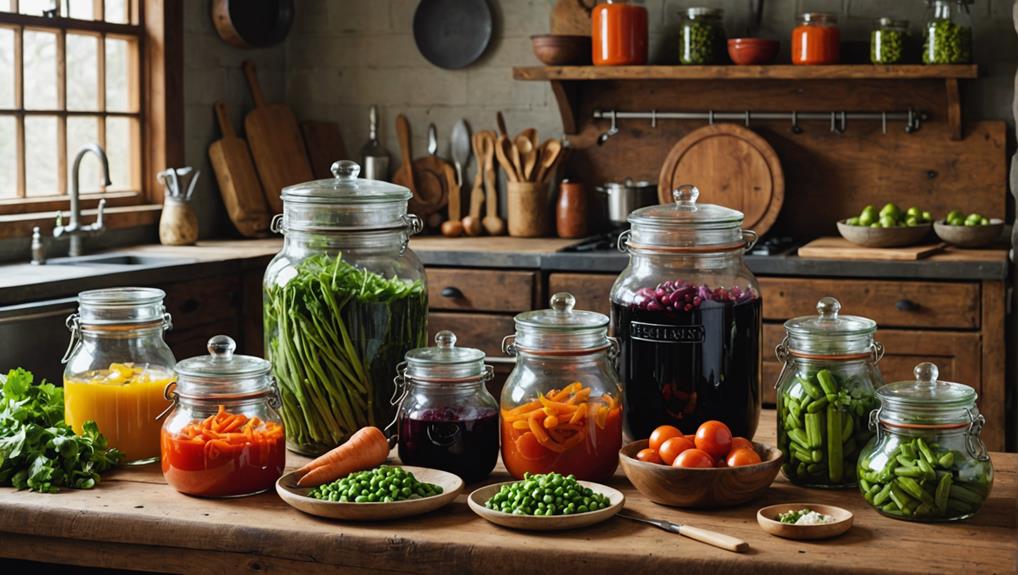
Often overlooked, the intersection of ancient fermentation techniques and modern gastronomy is revolutionizing culinary landscapes worldwide.
You'll find this fusion most pronounced in Japan, where time-honored traditions are meeting contemporary cuisine head-on. As a food industry professional, you can't afford to miss out on the unique applications of fermentation that are enhancing umami flavors in dishes across the globe.
Take, for example, the exclusive tasting of Kabura-sushi, a fermented radish sushi that exemplifies the marriage of tradition and innovation.
Or consider Noma's wild fermentation methods, which utilize multiple strains of lactic acid bacteria to create complex flavor profiles. These techniques are pushing the boundaries of what's possible in modern gastronomy.
To truly immerse yourself in this culinary revolution, you should consider joining fermentation tours in Japan. Much like wine tours in Napa Valley, these experiences offer a deep dive into the cultural significance of fermentation and its integration into daily life.
You'll gain insights into preserving time-honored practices while exploring their potential in contemporary cuisine, ensuring you stay at the forefront of culinary innovation.
Frequently Asked Questions
What Is Fermented Flavor?
You'll discover fermented flavor's rich history in the fermentation process. It's a complex blend of flavor compounds created by microorganisms transforming food. You're tasting centuries of culinary innovation, with tangy, umami notes that excite your palate.
Why Do Fermented Foods Taste Better?
You're in for a treat! Fermented foods taste better due to an umami explosion, intensified flavors, and probiotic benefits. They're a culinary tradition that's stood the test of time, offering complex taste profiles you won't find elsewhere.
Why Do I Love Fermented Foods so Much?
You're drawn to fermented foods for their health benefits, cultural significance, and unique flavors. Your personal experiences with these innovative delicacies have likely sparked a passion, satisfying both your taste buds and your desire for nutritious, adventurous eating.
What Are Some Fermented Foods to Eat?
Picture tangy sauerkraut bursting with gut-boosting benefits. Explore diverse kimchi varieties, from classic to creative fusions. Dive into a world of yogurt types, from Greek to plant-based. You'll discover endless fermented food options to revolutionize your diet.
Final Thoughts
You've unlocked the secrets of fermentation, mastering techniques that transform simple ingredients into complex flavors. You've harnessed enzymes, unleashed umami, and embraced artisanal cultures. You've bridged time-honored traditions with modern gastronomy, creating a fusion of old and new. As you continue your culinary journey, remember that fermentation is both an art and a science. Experiment, taste, and refine your skills. The world of fermented flavors is vast and ever-evolving, waiting for you to explore its depths.

